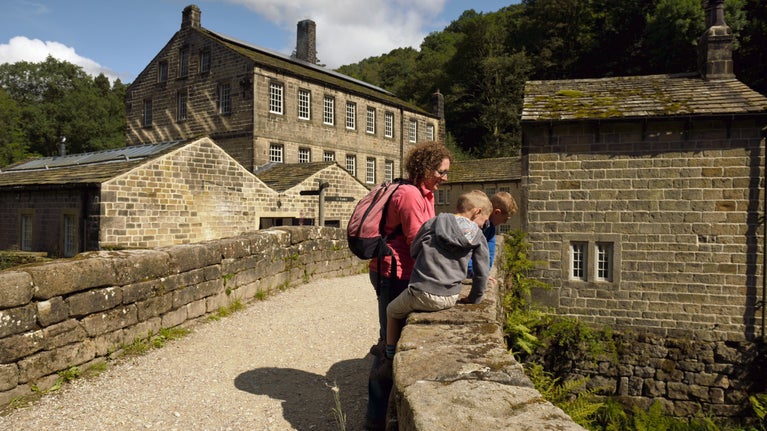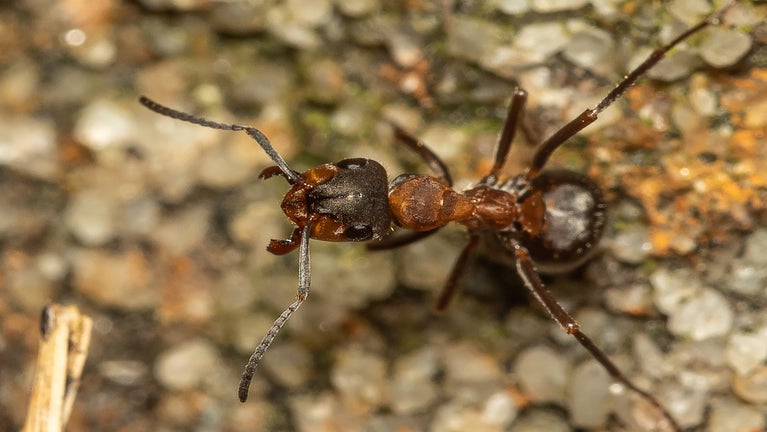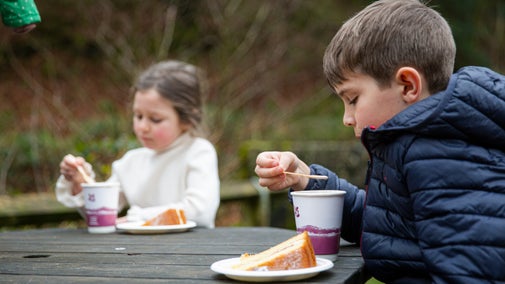
Discover more at Hardcastle Crags
Find out how to get to Hardcastle Crags, where to park, things to see and do and more.

Hardcastle Crags is home to an amazing array of wildlife. From bats to beetles and skylarks to bluebells there's plenty to be discovered at Hardcastle Crags. If you're looking to get close to nature, here are some of the wonderful wildlife highlights that you might be lucky to see on a visit.
Species-rich hay meadows can be found high on the valley sides, close to the Widdop Road. The meadows are cut in late summer after the plants have flowered, allowing the seed to be collected.
Types of birds and insects commonly found on meadows include the skylark, twite, meadow pippet, and beetles. The meadows are a favourite with bees and butterflies, with various species seen throughout the spring and summer.
Perhaps the most famous residents of Hardcastle Crags are the colonies of northern hairy wood ants that live throughout the woodland.
These little creatures live in huge nests which can be as large as six feet tall. The nests extend a couple of feet below the ground with an extensive labyrinth of tunnels that are tended to by female ants from the colonies.
Mill ponds from a past industrial age now provide aquatic habitats for invertebrates, fish, amphibians and birds. Dippers, herons and wagtails can often be seen darting across the water’s edge and the ponds themselves are home to frogs, toads and newts.
The fast-flowing streams of Hebden Water and Crimsworth Dean Beck flow through Hardcastle Crags too. Here you'll see a variety of different birds and insects such as damselflies and dragonflies, as well as a variety of fish darting around beneath the surface.

If you're lucky, you might see some of the resident roe deer on a visit. These are the largest mammals found in Hardcastle Crags and they are easily recognised by their characteristic white rumps. Early morning is the best time to see the deer, as they head back into the trees to hide.
It's not just the deer who prefer the Crags after dark, when everything is still and quiet. The valley is also home to eight species of bat, including pipistrelle, whiskered, Natterer's and noctule.
Hardcastle Crags is a haven for birdwatching. From the early dawn, the woodland is filled with the songs and sounds of resident bird life.
Common sightings include blue tits, great tits, chiffchaffs, wrens and robins, but if you're lucky you might spot some of the less-common sightings too. Look out for green woodpeckers, redstart, grey wagtail, bullfinch, willow warbler, wood warbler and song thrush which also call this place home.
In the upland areas surrounding the woodland, you might see curlew, lapwing and twite. In the skies above the treetops, buzzards and other birds of prey can often be seen circling.
This ancient semi-natural woodland is a mixture of native broadleaf trees, including oak, birch and alder and planted areas of beech and pine.
A rich variety of plant life can also be seen, with species such as great woodrush, bilberry, wood sorrel and climbing corydalis. These flowers poke up from the woodland floor, hidden amongst the greenery, providing a splash of colour throughout the trees.
Lichens and bryophytes thrive in this area because of the high humidity in the deep valleys. The fields around Hardcastle Crags are home to some incredibly rare species of fungi, with over 400 species noted by local naturalists.
Many of the incredibly rare fungi found here are on threatened species lists, as they only grow in very specific conditions. Luckily, they are thriving in parts of Calderdale.
As part of the Grassland Fungi Project, we're working with local landowners to look after these important ecosystems.

Find out how to get to Hardcastle Crags, where to park, things to see and do and more.
Learn about the history and evolution of the landscape at Hardcastle Crags and Gibson Mill, including its industrial heritage and the mill’s time as an entertainment emporium.

With 15 miles of footpaths, Hardcastle Crags is the perfect place to walk your dog and explore your surroundings, with helpful facilities available for your four-legged friend. Hardcastle Crags is a three pawprint rated place.

Head to the Weaving Shed Café for a choice of treats, then pop into the second-hand bookshop to pick your next page turner.
